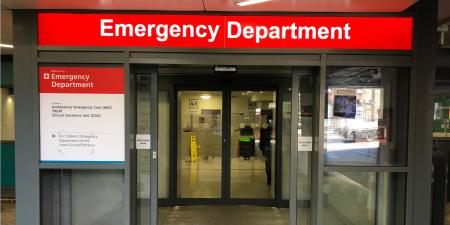I’ve tried to quit smoking more times than I can count. Several years ago, I asked my family physician for a well-known drug to help me quit. He responded by providing me with a list of support groups, suggesting I try one. I responded that I was not a “support group” person. He suggested I try one anyway. The interaction struck me as odd, given that the physician and I clearly had the same goal—I was to quit smoking—but the physician was dictating the means of achieving that goal.
Part of my surprise in this case arose from my confusion about the role of informed consent in medical practice. In what follows I provide a more accurate, though less appealing, view of informed consent. The concept of informed consent has been defined in many ways: shared decision-making [1], an attempt to balance patient self-determination and patient well-being [2], a necessary supplement to physician altruism [3], and a ritual of trust [4]. Despite all these definitions, this practice, this legal requirement, this form we must sign before receiving care, is not particularly well understood by medical practitioners and patients.
Take for example a recent piece in the Journal of General Internal Medicine by Peter Schwartz and Eric Meslin [5]. In the abstract they note a relationship between, “the ethical principle of respect for autonomy and its application in informed consent or [emphasis added] shared decision-making.” Early in the article they state: “This principle [of respecting patient autonomy] requires, among other things, that patients guide their health care by providing informed consent to proposed interventions or [emphasis added] by participating in shared decision making” [5]. They conclude with, “while respect for autonomy is central to health care ethics, it can be difficult to clarify what level of disclosure or understanding is necessary for a specific patient in a specific situation. . . to adequately consent to medical interventions” [6]. While accurately indicating that there exists some relationship between respect for autonomy, informed consent, and shared decision making, these quotes fail to recognize the very limited scope of informed consent and the substantial differences between its requirements and those of shared decision making. Specifically, as every physician knows, informed consent is legally required. As an aspect of patients’ autonomous decision making, however, informed consent is a negative—not a positive—expression of autonomy. Shared decision making, on the other hand, is more likely to include positive expressions of patient autonomy, but it is not legally required and may or may not be part of the patient-physician encounter.
Schwartz and Meslin follow a view common to the discussion of informed consent in bioethics. Buchanan and Brock’s [2] well-known discussion of competence is representative of this “patient-centric” view. On their view, two values ground the practice of informed consent: promoting the patient’s well-being while preserving the patient’s self-determination. Yet the legal, clinical, and etymological background of informed consent suggest otherwise. The legal history emphasizes the right of refusal—patients must be informed so that they can agree (or not) to what the physician recommends [7]. The clinical history of informed consent emphasizes an ever-increasing encroachment on physician authority—interventions previously performed without patient consent now require it (e.g., childhood immunizations), though this is not true in all cases (e.g., episiotomy). The language itself, “informed” and “consent,” implies that physicians make a judgment to which patients agree (or not). In short, informed consent is less about patient decisions than it is about restraining physicians. Informed consent operates like a pie crust that keeps the filling of physician judgment and activity from spilling onto the table and the floor— it constrains physician activity; it does not enhance patient autonomy.
In the best cases, then, to push the pie analogy a little further, patients are allowed in the kitchen but they are not allowed to touch the ingredients or use any utensils to help with the pie filling. When asked, the patient may choose among fillings the physician offers, but they are not entitled to produce their own filling or direct what fillings the physician offers. The patient may also refuse every filling the physician offers, and so refuse to make a pie.
Competence, power relations, and bias further attenuate the meaningfulness of a right of refusal. First, patients may lack even the basic components of decision-making competence; they cannot meaningfully say "no." Second, information can be challenged by the patient (e.g., "Why do you recommend that?"), but the physician is the locus of control for the structure of the process and the type and amount of information provided. Third, the biases of human judgment often undermine patient decision making so that the decision to say "no" reveals more about the conditions under which the decision was made than about the preferences of the patient.
Setting aside the important, though well-covered, questions about competence, the effects of power and the implications of bias warrant a few more words. Patients and physicians inhabit different positions of power—physicians with esoteric knowledge of potential benefit and patients with the right of refusal. These differences in power structure the informed consent process in unappealing ways. Specifically, physicians are the means through which patients’ refusals become possible. That is, physicians make patients aware of those interventions that they (the patients) are empowered to refuse—patients’ ability to restrain physician activity is the responsibility of the physicians themselves. Ready-made consent forms ease the discharge of this responsibility. Much like a ready-made pie crust, consent forms have been standardized to limit the need of physicians to be actively involved in reining in their work, the refusal of their recommendations. Far from ideal, the ready-made pie crust still controls the filling better than no crust at all.
The problems of a ready-made pie crust and other means of limiting physician involvement in informed consent (e.g., having the nurse do it) are even less appealing when the biases of patient judgment are considered. Large numbers of studies illustrate the predictable biases in human judgment, many using hypothetical or actual medical judgments [8-12]. What this research means for informed consent is not entirely clear, but a few preliminary conclusions can be drawn. First, certain conditions give rise to biased decisions to consent (or refuse) by patients. Second, these conditions can be controlled by medical practitioners. Take for example the effect of presenting information as proportions rather than as percentages. Robust evidence indicates that information presented as proportions leads to more accurate interpretations of the information by both lay individuals and experts [13]. Naive and expert decision makers alike have been shown to identify more accurately the implications of this statement: "The test accurately identifies 8 out of 10 true positives and 9 out of 10 true negatives for a disease with 1 out of 100 prevalence"; than of this statement: "The test identifies 80 percent of true positives and 90 percent of true negatives for a test with 1 percent prevalence." The decision to present in one manner rather than the other, however, rests solely with the clinician. The physician who views the principle of informed consent as a means for allowing naive patients to determine the adequacy of his or her clinical recommendations lacks motivation to incorporate these conclusions from cognitive psychology.
In sum, informed consent is the patient’s only piece of the pie that is medical care. This piece is best represented as the crust—the limit on the filling that is physician activity. This crust, however, is often provided to the patient by less-than-ideally motivated physicians or other medical practitioners in the manner that they, and not the patient or other experts (i.e., cognitive psychologists), deem appropriate.
Going back to my attempt to quit smoking, I had no legal right to demand pharmaceutical assistance. My only choice was consenting to go to the support group or refusing it. I did not go.
References
- Paterick TJ, Carson GV, Allen MC, Paterick TE. Medical informed consent: general considerations for physicians. Mayo Clin Proc. 2008;83(3):313-319.
- Buchanan A, Brock DW. Deciding for others. Milbank Q. 1986;64(Suppl 2):67-80.
-
Katz J. Informed consent—must it remain a fairy tale? J Contemp Health Law Policy. 1994;10:69-91.
-
Wolpe P. The triumph of autonomy in American bioethics: a sociological view. In: Bioethics and Society: Constructing the Ethical Enterprise. DeVries R, Subedi J, eds. Upper Saddle River, NJ: Prentice Hall; 1998:38-59.
-
Schwartz PH, Meslin EM. The ethics of information: absolute risk reduction and patient understanding of screening. J Gen Intern Med. 2008;23(6):867.
-
Schwartz, 869.
-
For an excellent review of the legal precedents on informed consent see Poland SC. Landmark legal cases in bioethics. Kennedy Inst Ethics J. 1997;7(2):191-209 (specifically 192-196).
- Baumann AO, Deber RB, Thompson GG. Overconfidence among physicians and nurses: the 'micro-certainty, macro-uncertainty' phenomenon. Soc Sci Med. 1991;32(2):167-174.
- Hall KH. Reviewing intuitive decision-making and uncertainty: the implications for medical education. Med Educ. 2002;36(3):216-224.
- McNeil BJ, Pauker SG, Sox HC Jr, Tversky A. On the elicitation of preferences for alternative therapies. N Engl J Med. 1982;306(21):1259-1262.
- Salovey P, Williams-Piehota P. Field experiments in social psychology: message framing and the promotion of health protective behaviors. Am Behav Sci. 2004;47(5):488-505.
- Williams-Piehota P, Pizarro J, Schneider TR, Mowad L, Salovey P. Matching health messages to monitor-blunter coping styles to motivate screening mammography. Health Psychol. 2005;24(1):58-67.
- Gigerenzer G, Hoffrage U. How to improve Bayesian reasoning without instruction: frequency formats. Psychol Rev. 1995;102(4):684-704.



